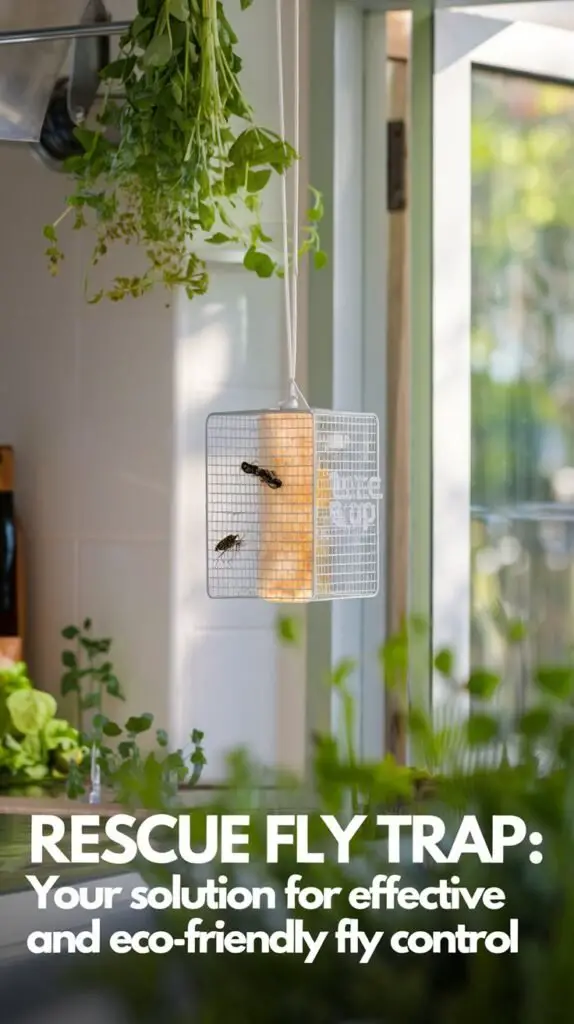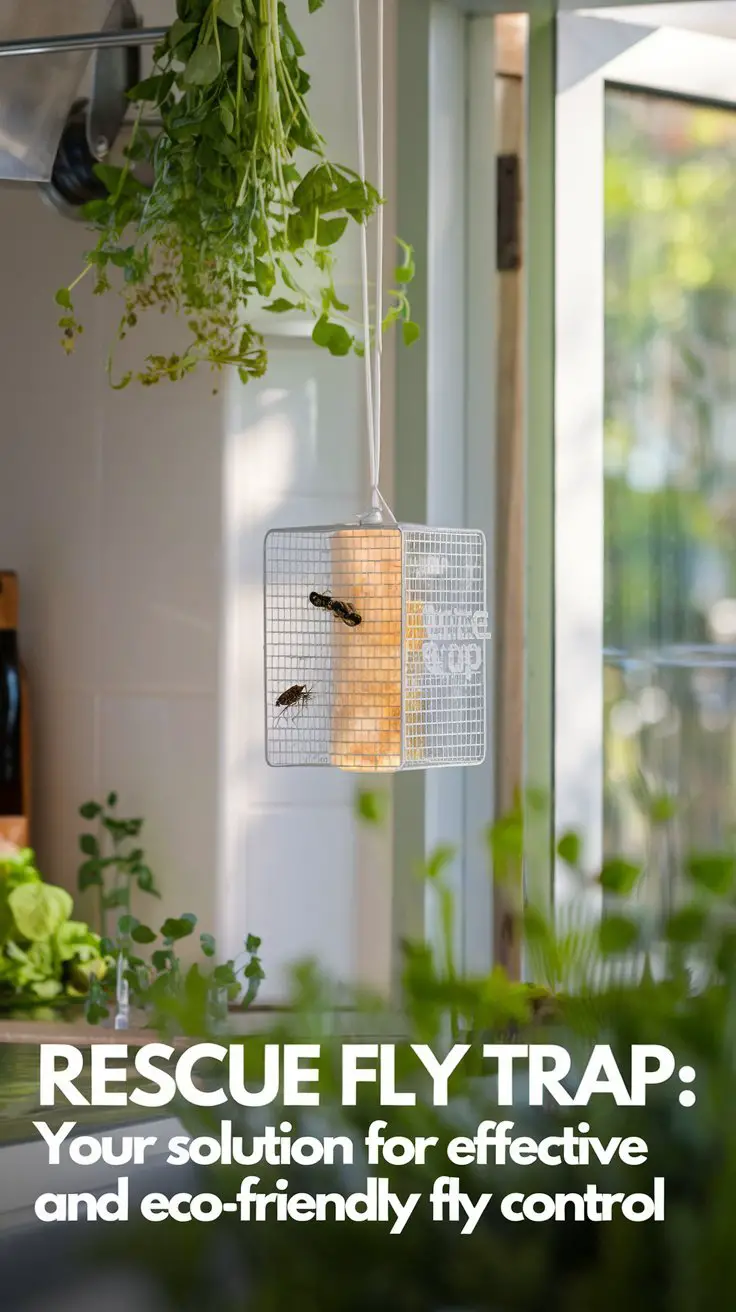Discover the power of Rescue Fly Trap in 2024. Learn expert tips on using, placing and maximizing the effectiveness of these eco-friendly fly control solutions for your home or business.
The Rescue Fly Trap is a powerful, non-toxic insect control solution that effectively attracts and captures various fly species. This innovative pest management tool uses a specially formulated bait to lure flies, providing homeowners and businesses with a safe, environmentally friendly alternative to chemical insecticides. In 2024, as concerns about pesticide use grow, the Rescue Fly Trap has become an essential component of integrated pest management strategies.
Hello, I’m Ashley Scott, an entomologist and pest control expert with over 15 years of experience in sustainable insect management. Today, I’m excited to share my knowledge about Rescue Fly Traps, a game-changing solution in the world of fly control methods.
Understanding Rescue Fly Traps

Rescue Fly Traps are innovative outdoor fly control devices designed to attract and capture various fly species, including house flies, bottle flies, and flesh flies. These traps use a non-toxic, food-based attractant that lures flies into a container from which they cannot escape.
Key features include:
- Reusable trap design
- Water-activated attractant
- Capacity to catch thousands of flies
- Environmentally friendly and pesticide-free
Why Choose Rescue Fly Traps in 2024?
- Eco-Friendly Pest Control: As one of the leading natural fly repellent options, Rescue Fly Traps offer an alternative to harmful chemical pesticides.
- Targeted Pest Management: These traps specifically attract flies, minimizing impact on beneficial insects.
- Cost-Effective Solution: One trap can capture thousands of flies, providing long-lasting protection.
- Versatile Applications: Suitable for both residential and commercial use, including farm and agricultural pest control.
How Rescue Fly Traps Work
The science behind Rescue Fly Traps is fascinating:
- The trap contains a specialized attractant that mimics fly food sources.
- When mixed with water, the attractant releases a scent irresistible to flies.
- Flies enter the trap through small holes and become trapped in the liquid.
- The decomposing flies further enhance the attractant’s effectiveness.
Setting Up Your Rescue Fly Trap
Choosing the Right Location
Proper placement is crucial for maximum effectiveness:
- Place traps 20-30 feet away from areas you want to protect
- Hang traps about 4-6 feet off the ground
- Ensure traps are in sunny locations, as warmth activates the attractant
Activation and Maintenance
- Remove the cap and add warm water to the fill line
- Replace the cap securely and shake to mix the attractant
- Hang the trap in the chosen location
- Check and replace traps as needed (usually every 30 days or when full)
For large areas or severe infestations, consider using multiple traps as part of an integrated fly management system.
Innovative Uses for Rescue Fly Traps in 2024
Smart Pest Monitoring
Combine Rescue Fly Traps with IoT devices to track fly populations and optimize trap placement. This digital pest control approach allows for data-driven pest management decisions.
Sustainable Agriculture
Farmers are increasingly using Rescue Fly Traps as part of organic farming practices, reducing reliance on chemical pesticides and protecting livestock.
Urban Pest Management
Cities are incorporating Rescue Fly Traps into municipal waste management strategies to control flies around compost sites and waste facilities.
Maximizing Trap Effectiveness
To get the most out of your Rescue Fly Traps:
- Use multiple traps for larger areas
- Rotate trap locations to prevent fly adaptation
- Combine with other natural fly control methods like essential oils or fly-repelling plants
- Keep traps away from outdoor dining areas to avoid attracting flies to these spaces
Comparing Rescue Fly Traps to Other Methods
When considering fly control options, Rescue Fly Traps offer several advantages:
- More environmentally friendly than chemical sprays
- Longer-lasting protection compared to electronic zappers
- Safer for pets and children than toxic baits
- More effective at large-scale control than fly swatters or sticky traps
Troubleshooting Common Issues
- Low Catch Rates: Ensure the trap is in a sunny location and contains fresh attractant
- Odor Concerns: Place traps farther from living areas; the smell is part of its effectiveness
- Attracting Beneficial Insects: Adjust placement to minimize impact on non-target species
Rescue Fly Traps offer a powerful, eco-friendly solution for fly control in 2024. By harnessing the natural behavior of flies, these traps provide effective pest management without the drawbacks of chemical pesticides. Whether you’re a homeowner, farmer, or business owner, incorporating Rescue Fly Traps into your pest control strategy can lead to a cleaner, more comfortable environment with fewer flies.
As we continue to seek sustainable pest management solutions, products like the Rescue Fly Trap play a crucial role in balancing human needs with environmental responsibility. By understanding how to use these traps effectively, you can enjoy outdoor spaces with minimal fly interference while contributing to a healthier ecosystem.
For more gardening tips and plant care guides, visit usagardenhub.com.





One comment on “Rescue Fly Trap : Your Solution for Effective and Eco-Friendly Fly Control”